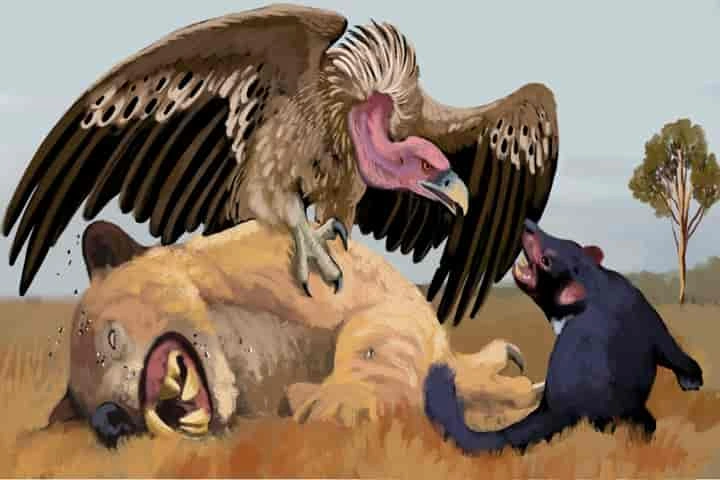The scientists of Australia recently celebrated the discovery of their country’s first vulture fossil! A sciencealert.com report stated that this fossil had been unearthed in South Australia, and for more than 100 years it was thought to belong to the grave eagle family but now a new study has revealed that it is actually the remains of a vulture.
The bird is Cryptogyps lacertosus which means powerful hidden vulture. It was found in the region between 500 and 50,000 years ago and is an ‘Old World’ vulture. Species related and like it are found in other parts of the world but not Australia.
The reassignment of the fossil to vulture category reflects the varied wildlife and megafauna which was there in this area during the Pleistocene era – that started 2.5 million years ago and came to an end 11,700 years ago.
Talking about this bird, Ellen Mather said: “We compared the fossil material to birds of prey from around the world, and it became clear right away that this bird was not adapted to being a hunter, and so was not a hawk or an eagle. The features of the lower leg bone are too underdeveloped to support the musculature needed for killing prey. When we placed Cryptogyps in an evolutionary tree, this confirmed our suspicions that the bird was a vulture, and we are very excited to finally publish on this species."
Mather is a palaeontologist from Australia’s Flinders University.
It was in 1901 that the first part of this fossil – a wing bone fragment – was found close to the Kalamurina Homestead located on South Australia’s Warburton River. In a span of few years, the scholars stated that it was from an extinct relative of the wedge-tailed eagle.
In the last few years scientists including those who are connected with the present study questioned the classification of the fossil under the eagle family. They pointed out that vultures of the Old World may have been there in Australia during the Pleistocene era and that this fossil may be one of them.
When new fossils were located in Wellington Caves in New South Wales and in Western Australia’s Leaena’s Breath Cave in the Nullabor Plains, it further strengthened the case of these scientists.
During the period when C. lacertosus were in Australia, the bird shared space with wedge-tailed eagles and scavenged on the remains of some of the large animals like marsupial herbivore Diprotodon and the marsupial lion Thylacoleo, which are now extinct.
Commenting on the C. lacertosus fossil, Trevor Worthy remarked: “The discovery solves a mystery of what happened to so many megafaunal carcasses when the continent didn't have vultures. Now we know they were here. They've been hidden in plain sight."
Worthy is a palaeontologist from Flinders University.
The fossil also throws light on how varied predatory birds once existed in Australia and that their number then was more than what it is today.
These birds play a vital role in the ecology as they hasten the process of decay of a carcass lessening chances of spread of diseases.
Scientists also highlighted another important point about the vultures vanishing from Australia stating that it would have affected the status quo of the ecology with other scavengers filling up the vacuum created by these birds.
In case C. lacertosus behaved in the same fashion as present-day vultures, then they would have also got together to feed on one carcass thereby giving them a competitive edge over others.
Details of the study were published in Zootaxa.




















